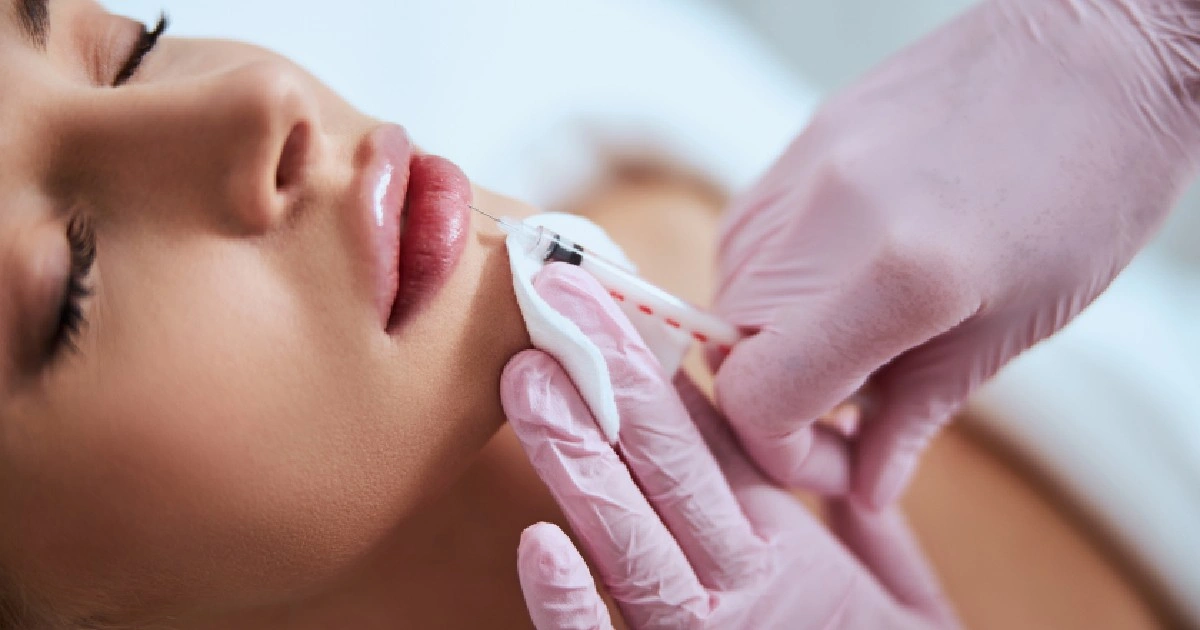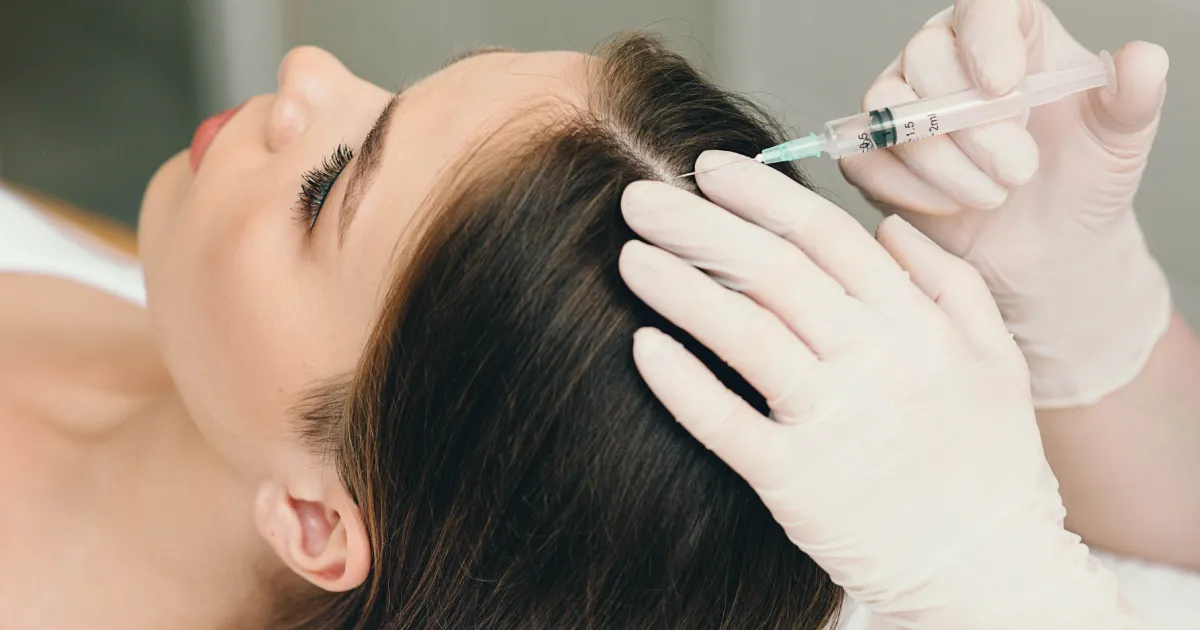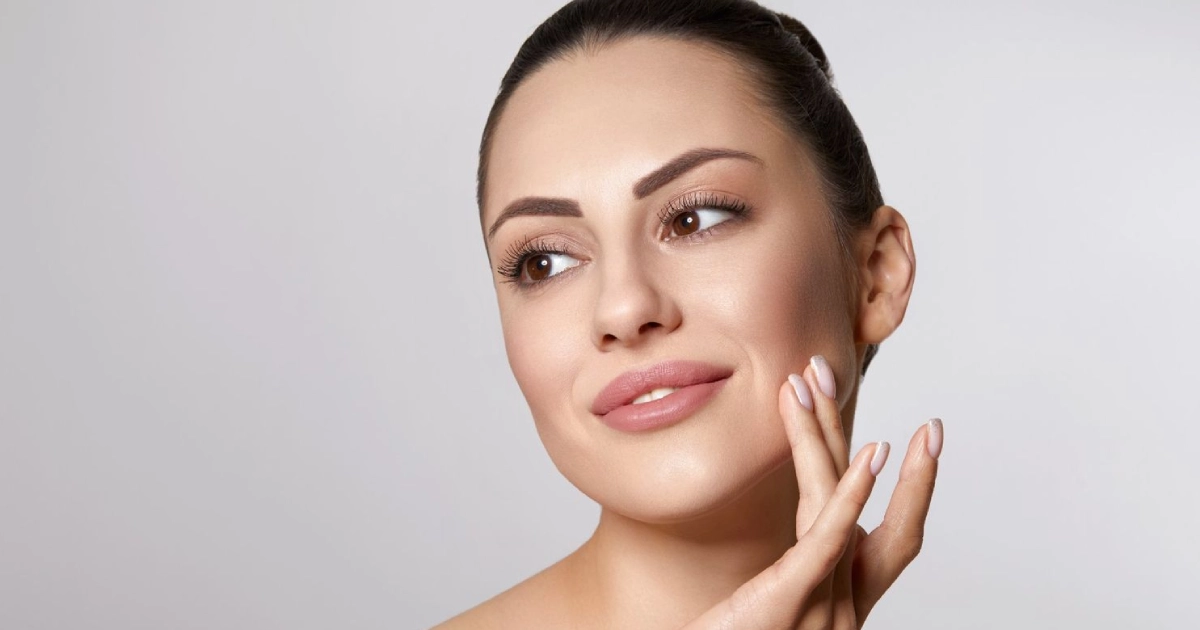Hair is often considered a defining feature of our appearance, and losing it can be distressing. Hair loss doesn’t discriminate; it can affect anyone, regardless of age, gender, or ethnicity. Fortunately, advances in medical treatments offer hope and solutions for those experiencing hair loss.
One innovative approach involves Microneedling combined with PRF injections. Before discussing these treatments, let’s examine the various forms of hair loss and their underlying reasons.
Types of Hair Loss
Androgenetic Alopecia
Male or female pattern baldness, sometimes referred to as androgenetic alopecia, is the most frequent kind of hair loss. It can impact both men and women and is mainly inherited. Whereas women typically detect a broad thinning over the scalp, men often suffer a receding hairline and thinning at the crown.
Alopecia Areata
In autoimmune disorders like alopecia areata, the immune system unintentionally attacks hair follicles, resulting in patchy hair loss. This condition can affect the scalp and other parts of the body. The hair often falls out in small, round patches, sometimes leading to complete baldness or hair loss across the entire body.
Telogen Effluvium
When several hair follicles concurrently enter the resting (telogen) phase, a transient hair loss known as telogen effluvium results. Various factors, including stress, illness, surgery, or hormonal changes, can trigger this condition. While it usually resolves on its own, hair loss can be significant and distressing.
Traction Alopecia
Traction alopecia is caused by consistent tension in the hair caused by certain hairstyles, such as tight braids, ponytails, or extensions. If not appropriately treated at once, this ongoing stress on the hair follicles may cause irreversible damage and hair loss.
Scarring Alopecia
A group of uncommon illnesses collectively referred to as “scarring alopecia” or “cicatricial alopecia” destroys hair follicles and replaces them with scar tissue, resulting in permanent hair loss. The cause is not entirely understood, but it may be linked to autoimmune disorders, infections, or other inflammatory conditions.
Hair Loss Treatments
Microneedling and PRF Injections
One of the most promising and innovative treatments for hair loss is the combination of Microneedling and Platelet-Rich Fibrin (PRF) injections. This minimally invasive procedure leverages the body’s natural healing processes to promote hair growth and improve hair density.
How It Works
Microneedling involves using tiny needles to create micro-injuries in the scalp. These micro-injuries trigger the body’s healing response, promoting the production of collagen and the rejuvenation of hair follicles. When combined with PRF injections, the treatment becomes even more effective. PRF is made from the patient’s blood and contains many proteins that promote healing and development. By injecting PRF into the scalp, we enhance the natural healing process and stimulate hair growth.
Benefits of Microneedling and PRF Injections
Thinning hair, receding hairlines, and overall hair loss are among the kinds of hair loss that can benefit from this therapy. The benefits include:
- Natural-Looking Results: The procedure stimulates natural hair growth, ensuring a more authentic appearance.
- Minimal Downtime: Microneedling with PRF injections is a minimally invasive technique that has little to no downtime.
- Long-Lasting Effects: With proper maintenance, the results can last up to a year or more.
- Safe and Effective: Most people find using the patient’s blood a safe choice because it lowers the possibility of negative responses.
What to Expect
A tiny sample of the patient’s blood is taken during the procedure and processed to isolate the PRF. After applying microneedling to the scalp, PRF is injected into the designated locations. The procedure lasts around one hour, and most patients report minimal pain.
Results are not immediate, as hair growth takes time. However, many patients begin to see improvements within a few months, with optimal results appearing after several treatment sessions. To sustain the benefits, it’s essential to follow a maintenance plan recommended by your provider.
Other Hair Loss Treatments
Medications
Several medications are available to treat hair loss. The most common include:
- Minoxidil (Rogaine): A topical medication available over the counter that can promote new hair development and reduce hair loss.
- Finasteride (Propecia): A prescription oral medication for men that reduces hair loss and promotes regrowth by blocking the hormone responsible for hair loss.
Such medications may have adverse effects and need to be used consistently to maintain results.
Hair Transplant Surgery
For those seeking a more permanent solution, hair transplant surgery may be an option. This procedure involves transplanting hair follicles from one part of the body (usually the back of the head) to the thinning or balding areas. Hair transplants can provide natural-looking results, but they are more invasive and expensive compared to other treatments.
Laser Therapy
Low-level laser therapy (LLLT) is another non-invasive treatment option. It involves using laser devices to stimulate hair follicles and promote hair growth. This treatment can be done at home with laser combs or helmets or in a clinical setting with more powerful laser devices.
Lifestyle Changes and Home Remedies
In addition to medical treatments, specific lifestyle changes and home remedies can support hair health and potentially reduce hair loss:
- Healthy Diet: A balanced diet rich in vitamins and minerals, such as biotin, vitamin D, and iron, can promote hair growth.
- Stress Management: Reducing stress through yoga, meditation, or exercise can help prevent stress-related hair loss.
- Gentle Hair Care: Avoiding harsh hair treatments, minimizing heat styling, and being gentle when brushing or washing hair can reduce damage.
Conclusion
Hair loss is a common problem that can significantly affect self-esteem. Determining the best course of action requires an understanding of the various forms of hair loss and the therapies available.
Microneedling and PRF injections offer a promising option for those seeking a minimally invasive and natural-looking treatment. Alongside other medical and lifestyle interventions, these treatments can help you achieve healthier, fuller hair.
Choosing the Right Treatment in Brooklyn, NY
Suppose you’re considering hair loss treatments in Brooklyn, NY. Then, it would be best to speak with a trained expert who can evaluate your situation and suggest the best course of action. Personalized treatment plans, like those offered at Glo By Glen Facial, ensure that you receive the care and attention you need for optimal results. Our team of professionals is committed to giving you individualized treatment and assisting you in getting the most significant outcomes.
Contact us today to schedule a consultation and learn more about how Microneedling and PRF injections can benefit you. Let us help you take the first step toward restoring your hair and confidence.









